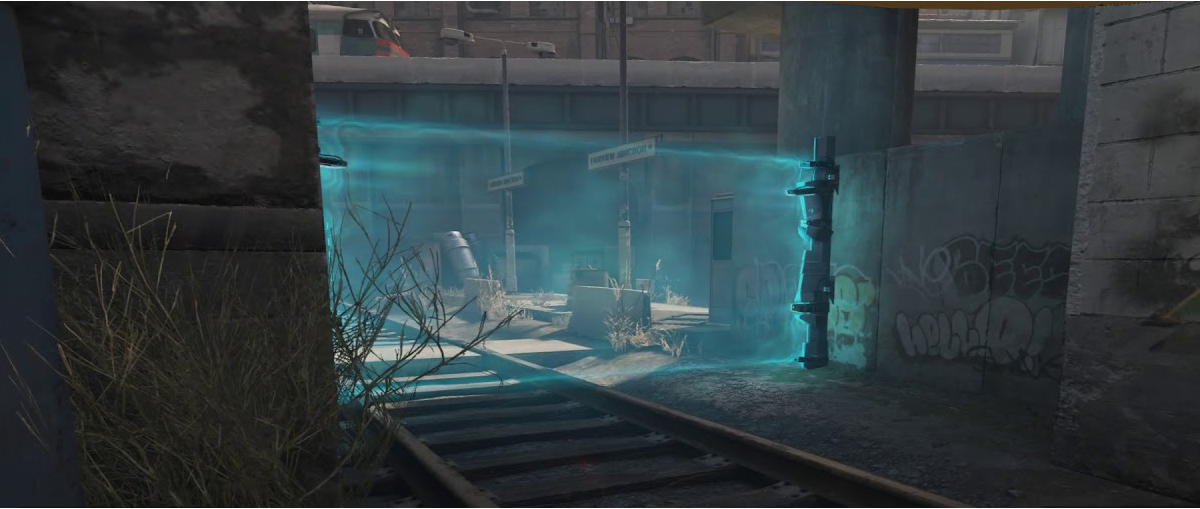Combine Hardlight Fields (CHD) | AEGIS Barrier Systems
Combine Hardlight Deployment (CHD) "Aegis" Barrier Systems
Field-Controlled Photonic Partition Units – Generation I
Document Classification: Tier-2 Authorized Access
Date: ██/██/2014
Author: -REDACTED-
Distribution: City Administrator Networks / Civil Protection Infrastructure Divisions
Abstract:
The CHD "Aegis" Barrier System is the Combine's standardized deployment of hardlight-based containment fields used in urban occupation environments. Leveraging advanced photon interactivity modulation and carbon-fusion lattice support, the Aegis system enables fast-deployable, semi-permeable energy barriers for urban suppression, corridor denial, and perimeter lockdown operations.
Unlike traditional ballistic barricades or pre-war mechanical gate systems, CHD barriers are modular, impervious to small-arms fire, and capable of on-demand deployment, making them ideal for Combine pacification protocols and transit restriction mandates.
Technology Overview:
Hardlight Structure:
CHD barriers are composed of photonic constructs projected from paired emitter pylons, arranged opposite each other at designated field nodes. These pylons generate a stabilized hardlight lattice by:
- Amplifying photon binding through a resonance field, increasing the interactivity between photons beyond naturally occurring limits.
- Drawing ambient carbon molecules from the surrounding atmosphere, especially from degraded industrial zones and airborne particulates.
- Fusing the carbon into the photon lattice via microscale plasma bonding, resulting in a semi-permanent carbon fiber matrix that gives the barrier physical resistance and form.
This hybrid light-carbon mesh exhibits strength comparable to pre-war military-grade composite armor plating while maintaining the inertia-deflecting, massless properties of light-based constructs.
Field Generator Configuration:
Each CHD unit consists of:
- Dual Phase Emitters (Model: Vx-2F): Opposed pylons capable of synchronized lattice projection.
- Power Core (Type-4 Xen Reactor Node): Supplies a constant field charge; protected from tampering by proximity shielding.
- Modulation Core: Determines field behavior, including:
- Permeability (e.g., blocking humans, allowing Combine-encoded IFF signals)
- Field polarity (directional collapse on command)
- Decay protocol (emergency shutdown via administrator override)
Applications in Urban Environments:
- Checkpoint Control: Used to partition City sectors, enforce curfews, and create compliance choke points.
- Containment & Quarantine: Rapidly deployed in response to rebellion hotspots or biohazard contamination events.
- Crowd Management: When integrated with Civil Protection formations, Aegis Barriers provide active suppression zones and dispersal corridors.
- Automated Integration: Compatible with Scanner and APC IFF systems, allowing dynamic barrier behavior based on personnel access hierarchies.
Operational Notes:
- Field visibility is deliberately translucent, often glowing in blue or yellow hues to induce psychological compliance in Citizens.
- Barrier duration is indefinite when powered but will fail immediately if both pylons are disabled or separated beyond the link limit (~12m).
- Touching the barrier while "red" with unprotected flesh results in:
- First-degree burns
- Temporary nervous system disruption
- Short-term amnesia or neurodesync (in rare, prolonged exposures)
Future Development:
As of 2014, advancements in hardlight technology are underway to enable:
- Mobile projector variants deployable from dropships or man-portable rigs.
- Multi-layered constructs for tunnel-like enclosures and forcefield bridges.
- Directional combat shielding, where hardlight can be utilized as a forward-facing shield for Heavy Overwatch Units.
Until these developments are stabilized, the CHD "Aegis" system remains the backbone of forcefield infrastructure within Union-controlled territories.

